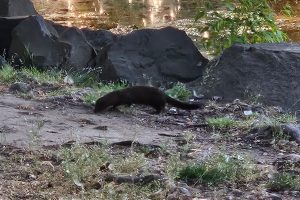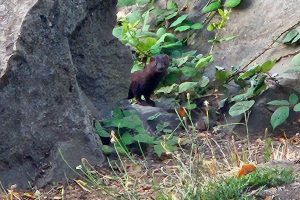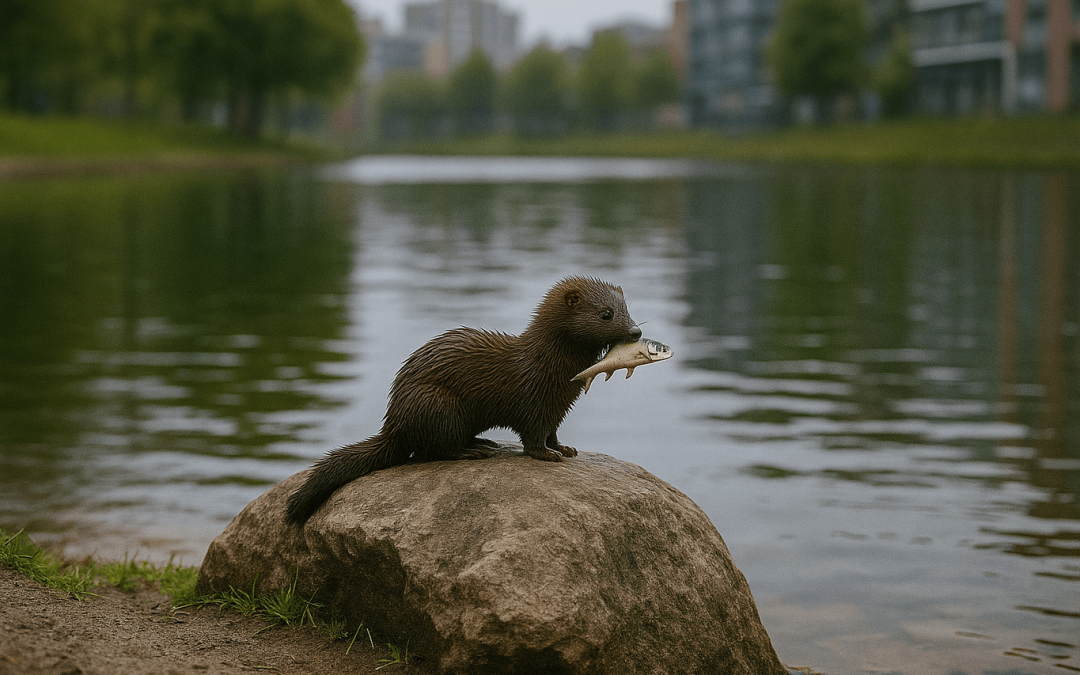If you live in a rural or semi-rural part of Oregon and keep chickens—or just enjoy seeing wildlife near your property—you may eventually cross paths with the American mink. These sleek, semi-aquatic predators are native to Oregon and, while they’re generally elusive, they’re not above raiding a henhouse when the opportunity presents itself. Let’s take a closer look at what these little weasels are all about, what they’re doing around your property, and how to keep your animals—and peace of mind—safe.
Key Takeaways
-
American mink are native to Oregon and are often found near water.
-
While generally shy, they can become a threat to backyard chickens and ducks.
-
Signs of mink activity include musky odors, tracks, scat, and missing or mutilated poultry.
-
Proper enclosure, exclusion, and cleanup are your best defenses.
Getting to Know the American Mink
The American mink (Neogale vison) is a member of the mustelid family—cousins to weasels, martens, and otters. Picture a long-bodied, short-legged critter with glossy chocolate brown to black fur, a white chin patch, and a tail that’s about a third of its body length. Adults usually weigh 1.5 to 3 pounds and measure around 20 to 30 inches long (including tail).
They’re excellent swimmers and prefer to stick close to streams, marshes, rivers, and lakes. If you’ve got water and cover nearby, you’ve got mink habitat. They’re active year-round and are primarily nocturnal, though you might catch one out and about at dawn or dusk.
Behavior, Biology, and Diet
Mink are solitary, territorial hunters. They feed on small mammals, birds, frogs, fish, and eggs. They’re agile climbers, fast on land, and surprisingly aggressive for their size. That boldness is part of what gets them into trouble around backyard livestock.
Mink breed once a year in late winter. Kits are born in the spring, and the mother raises them on her own. During this time, she’ll hunt more frequently—and if she stumbles on an easy food source like your chicken coop, she won’t hesitate to come back.
Why Mink Become a Problem
A well-fed mink is a good mink—until it figures out that your chicken coop is an all-you-can-eat buffet. Mink attacks can be devastating. They’re known for “surplus killing,” meaning they may kill more birds than they eat, especially if startled during a raid. If you find a scene that looks like something out of a horror movie—I will spare you the details, it’s not pretty—that’s classic mink behavior.
You might also notice:
-
A strong musky odor around the coop
-
Small tracks with five toes and visible claw marks
-
Droppings near water or den sites
-
Sightings of a slender dark animal darting through underbrush or along creek beds

A mink searches for food along the edge of a rocky riverbank at sunset. Photo by Dennis Scott
Where You Might Encounter Mink
Mink are highly adaptable and live in a wide range of Oregon environments, from forested riverbanks to urban creeks. If your property has:
-
Natural water sources
-
Poultry or other small livestock
-
Dense cover like blackberry thickets, log piles, or brush
-
Nearby drainage ditches or irrigation canals
…you’re in prime mink territory.
Keeping Mink Off Your Property
Mink are smart and persistent, so prevention takes more than a wing and a prayer. Try the following steps:
-
Secure your coop: Use ½-inch hardware cloth instead of chicken wire (which they can tear through). Bury fencing at least 12 inches underground to prevent digging.
-
Close gaps: Check for holes larger than 1 inch, especially around doors, vents, and eaves.
-
Lock it up at night: Make sure your animals are securely closed in every evening.
-
Remove attractants: Don’t leave feed, eggs, or carcasses out. These can draw scavengers like mink—and rats too.
-
Clear brush and debris: Mink love dense cover. Clean up woodpiles, overgrown areas, excess storage, and anything that could offer hiding places.
-
Install motion lights or trail cameras: These can help deter mink or confirm their presence if you suspect activity.

A mink peers cautiously from behind rocks and greenery along a riverbank. Photo by Dennis Scott
What To Do If You Have Mink Trouble
If you’re sure you’ve got a mink on your property—or you’ve had a serious loss of livestock—it might be time to bring in a professional. At Good Earth, our wildlife specialists can assess your site, identify signs of mink activity, and recommend the best exclusion or removal plan. Trapping may be appropriate in some cases, but the key is sealing up the entry points and making your place less appealing in the first place.
Final Thoughts
American mink are part of Oregon’s natural heritage—and they’re beautiful, efficient predators in the wild. But when they cross paths with your backyard flock, things can get messy fast. With the right steps, you can enjoy wildlife from a safe distance without sacrificing your chickens or ducks to the food chain.
If you’ve got mink (or suspect you might), give us a call. We’re happy to help protect your coop and keep the local wildlife from becoming unwelcome guests.



